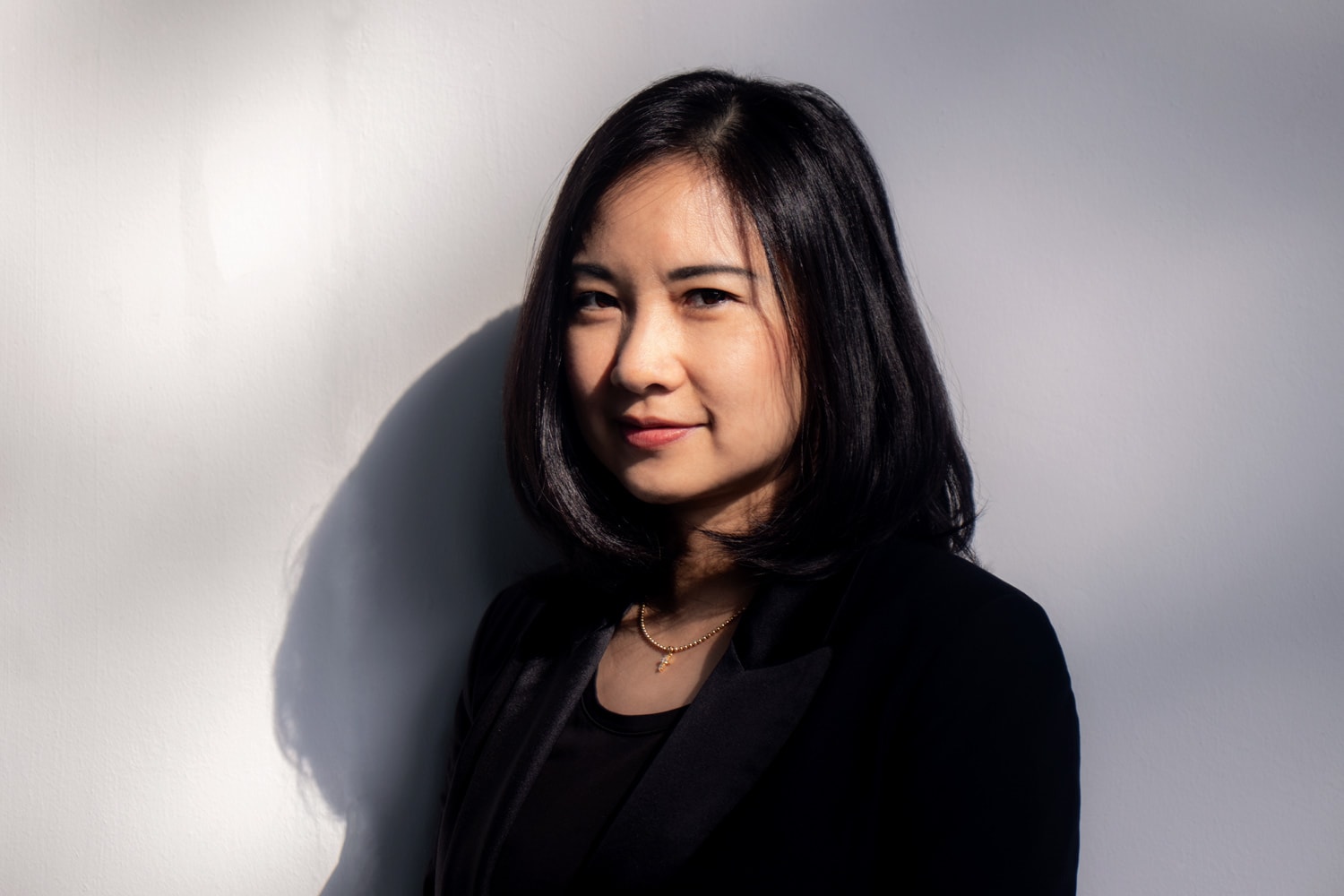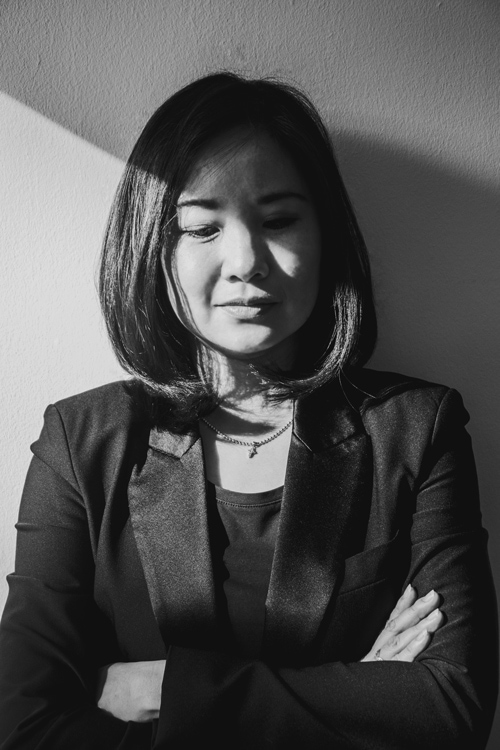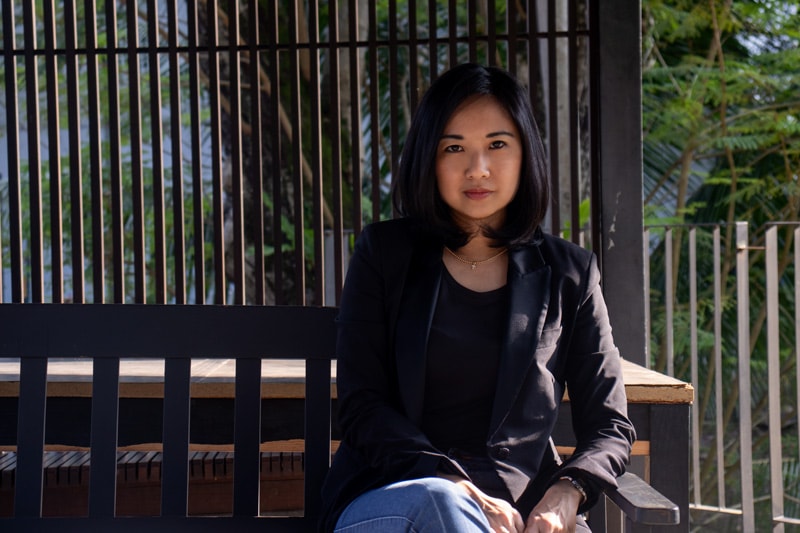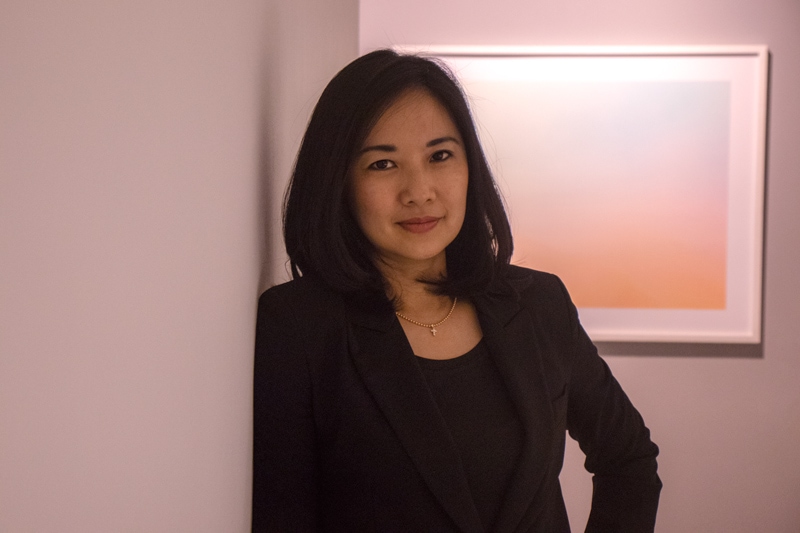Stephanie Fong: The Art of Running a Successful Gallery

When I arrive at Gillman Barracks in the middle of the day, I’m pleasantly surprised to be shielded from the sun by the extensive foliage that frames the military-camp-turned-arts-enclave. The warm light that trickles through the greenery bathes the area in an ambient glow—bewitching the explorer to linger a little longer. As I approach FOST Gallery, sitting at the gateway to the contemporary arts cluster, I steady myself to meet gallery owner Stephanie Fong, one of the tastemakers of the Singapore arts scene. I was once told that an interview is like a first date; in the minutes leading up to it your adrenaline spikes and your senses are heightened, creating indelible impressions that will remain carved in your memory. I step through the heavy doors of the gallery and the rush of cold air throws me off momentarily. I tell Stephanie’s assistant to hold off on announcing my presence, as I want to get acquainted with my surroundings first. While I contemplate the works on the wall*, I’m filled with a sense of disquiet in an otherwise tranquil setting. Staring at the photographic prints of what seem to be natural landscapes, I realise that the grass is too green—the rendering, too fine. The assistant tells me that these images weren’t digitally constructed, but physically fashioned from ground spices, dried herbs, and flour. A natural landscape manufactured with ingredients from Mother Nature, a double oxymoron that makes me chuckle. Such labour-intensive work for an ephemeral, surreal beauty. It takes intrepid curation to communicate these ironies. As Stephanie emerges into the foyer, she emanates a quiet composure. The tailored blazer she wears is complemented by fitting blue jeans that flare out at her knees—a silhouette that has been very trendy recently. After complimenting her on her sartorial choice, she smiles before revealing that she has kept that pair around for twenty years. Two decades on, and Stephanie still possesses a youthful exuberance with an almost child-like twinkle in her eyes. Her agelessness is mystifying and through the course of our conversation, I soon discover that her love, passion and hunger for art are the primordial ingredients of her potion of youth. Never one to follow the herd, I sense the struggle between being a shrewd entrepreneur who runs one of the most successful art galleries in Singapore and the romantic idealist who continues to live her dreams. Hoping to tease out this nuance, I ask if she would choose art that is more commercially viable or art that appeals to her soul. Stephanie hesitates briefly and says, “I just can’t bring myself to sell very cliché, pretty artworks. You might say the show we have on right now consists of aesthetically pleasing works, but there are deeper layers to his photographs. They aren’t just pretty pictures. Picking works that gesture at something deeper has been my focus from the start. There are so many galleries that already sell beautiful art; I don’t need to add to the noise.” Stephanie opened FOST Gallery in 2006, and staying true to her beliefs has proven to be a winning formula for success. As the afternoon sun dips, I delve deeper into her life story, seeking to understand her thoughts on the local arts scene, and the evolving international arts landscape.
NICOLETTE WONG: Tell me more about your journey that led you to start FOST Gallery. And what drew you into the art world?
STEPHANIE FONG: It wasn’t a very structured journey. I came back from London in the beginning of 2004 and was looking for a job. I had been away from a couple of years, so I thought I would try to get a sense of the art scene here. I visited practically every gallery that was listed in what was the Singapore Art Gallery Guide, which was, at that time, a definitive guide. There wasn’t a big art scene as there is now, and I literally went down the list from A to Z. At that time, in terms of institutions, there were only the National Museum, the Singapore Art Museum, and the Asian Civilisations Museum, which had just opened.
I remember complaining to my then-boyfriend about how disappointing some of the galleries were. Very often, they were like shops. They didn’t have a programme; they just displayed whatever they had. There was very little expertise too. Coming from London, I wasn’t used to that. The good galleries that existed numbered less than 10, and by “good” I mean they had a regular roster of exhibitions and they really promoted their artists. My then-boyfriend, now-husband grew tired of me complaining and said, “Why don’t you just start your own gallery since you think you know so much?”
I really didn’t know how difficult it would be, and maybe that’s a good thing, or I might not have done it. He came up with the name, which comprises the first two letters of my first name and surname. Very gingerly, I started looking for artists. I didn’t have any contacts. I started from zero. Slowly, I built a reputation for the gallery and myself, but it took a long time to get to where I am now. I still think there’s a lot of room to grow and I don’t think I’ve really arrived yet. I hope I’ll never feel like I’ve arrived, so there’s always a constant need to look and learn from other people as well as from my own mistakes. So that’s a very condensed version of my 14-year journey.
NICOLETTE: What’s something you’ve learnt recently?
STEPHANIE: [whispers] That I can’t do everything… That I’m mortal!
NICOLETTE: Isn’t that something all entrepreneurs say?
STEPHANIE: When you’re older, you look at your work and you know you’re capable, having done all these things before… But your energy levels drop and the industry’s landscape and demands of the job have changed so much. I used to be able to do everything, but now I can’t. And I should not, but it’s hard to let go because I’m very hands-on. I’m sure that’s something a lot of entrepreneurs have to grapple with.
NICOLETTE: Speaking of making a career in art, I'm sure you're familiar with the sentiment a lot of our parents and grandparents express that art does not provide a good livelihood. The few lucky enough to have found success in Singapore’s art scene are already in a closed circle. What advice would you give to somebody trying to break in?
STEPHANIE: It’s important to love what you do. There are days I really don’t think I could have gotten through without the love for what I do. You also need to be quite hard-nosed. There must be a balance between passion and objectivity about your career path. My journey might not work for somebody else. It’s just the path my life took. There’s no right or wrong answer. But I believe balance is very important in life in general. You need to be even-keeled.
NICOLETTE: So what do you love the most about what you do?
STEPHANIE: I’ve gotten to meet a lot of people. I don’t think I’d have met them if I’d stuck with my law career. That’s the best thing about my job.
NICOLETTE: Earlier you shared that you spent a good amount of time in London. Given that Singapore is trying to be the next big arts hub, how would Singapore’s art scene measure up to the art capitals of the world like London, New York, or Hong Kong?
STEPHANIE: We have a much shorter history than these countries, so it’s not a fair comparison. London is a capital for business, learning, and culture, with a long storied history. Singapore’s history, on the other hand, is so short. We’re trying our best. There are plenty of initiatives from the government, but that might not always be the best approach. Singapore is trying to emulate and compress everything that we have artificially, and so naturally, problems arise. We haven’t had the time to build a similar kind of scene. Why must we compare ourselves to places like London? Why can’t we make our own history? We should be confident in forging our own path and telling our own story without benchmarking ourselves to others.
NICOLETTE: In an ideal world, how do you see the local arts scene evolving over the next 5 years? Or 50?
STEPHANIE: It’s a bit difficult to answer, given the high volume of support and intervention from the government, who has played a large role in shaping our art scene. Can I change the question? “Ideal” implies the best way, but there isn’t really one. I’m curious about an alternative history. What if there had been no government support for the arts? How would the arts scene have evolved then? In the next five or 50 years, if we continue to have the same government, I think we’ll be on the same path where there is support, yet control. I’m more interested in how the arts scene would have naturally evolved if we were given less support. Unless the government we have today changes, I don’t think our arts scene will be fundamentally different.
"You can’t just lay the ingredients for a vibrant arts scene on a platter and serve it."
NICOLETTE: Do you think government support hinders true artistic growth?
STEPHANIE: Yes, and no. You can’t just lay the ingredients for a vibrant arts scene on a platter and serve it. In Singapore, government support is a huge factor. It can sometimes steer it in a certain direction, but I wouldn’t go so far to say that they seed ideas, but if you do something politically objectionable you wouldn’t be given a grant. You wouldn’t even make it to the panel for evaluation. There are a lot of safety nets in Singapore, compared to places like Manila or Jogjakarta where there’s nothing—and you either make it or you don’t. But they have problems too. When they become commercially successful, it becomes tempting to repeat the same thing. Of course, this is a generalisation. There’s no right or wrong way, but in Singapore we certainly have a very constructed sort of arts scene. Even Gillman is constructed.
NICOLETTE: Yes, the government has put in a lot of money to make it work.
STEPHANIE: It started in the 90s when we had the White Paper on the Renaissance City. All of what we see today comes from a bigger plan. Look at MoMA, for example. MoMA was started by a few philanthropists who pooled their resources together. That’s so amazing. It would be interesting to see if private individuals would band together and start an initiative like that in Singapore. I, too, am guilty of thinking that we should just let the government take care of it—which isn’t a very healthy attitude to have if we truly want a vibrant and authentic arts scene.
NICOLETTE: Do you think collectors here would be open to the idea of doing private showings in galleries here?
STEPHANIE: Actually, there’s a show on at LASALLE called “Two Houses”. Two great collectors, Yeap Lam Yang and Dr John Chia, both of whom are my clients and my friends, are showing parts of their collections at LASALLE. SAM (Singapore Art Museum) has done “Chimera”, which shows works from private collections. Some collectors choose to show at public places like Helutrans. In the past, no private collector would have opened up their home. Now, with increased connectivity, it’s common for collectors in the Philippines and Indonesia to do “open houses”. The idea is warming up in Singapore. But generally, people are still quite private here.
NICOLETTE: What’s the first piece of art you bought for yourself?
STEPHANIE: I’m a little embarrassed to say. But I’ll tell you about the first piece I bought in the business. It was from an Australian gallery who is now here at Gillman Barracks. It’s a repurposed vintage porcelain elephant. The artist substituted its tusks for plastic machine guns. This was in 2008, when the US had just invaded Afghanistan, and the work touched on an issue that nobody wanted to deal with. The piece, titled The Elephant in the Room, was inspired by the war in the Middle East and the weapons of mass destructions that the Western powers had alleged that Iraq had. It turned out that Iraq didn’t have those weapons, so the whole premise for the invasion was constructed. It’s about this big [gestures], and the artist painted about three quarters of the elephant in camouflage colours.
"I’ll always have a soft spot for artists who are Singaporean or Singapore-based."
NICOLETTE: Is there a certain philosophy that underlies your programming at FOST Gallery?
STEPHANIE: In the beginning, my focus was on Singapore-based artists, because I felt that local art wasn’t highlighted enough. Now that has changed, but I’ll always have a soft spot for artists who are Singaporean or Singapore-based. Over the years, as I’ve met and networked with people from around the globe, I’ve started working with international artists. I’m working with a Pakistani artist now who’s been asking me to go to Karachi to meet his friends. We’ve also shown Indonesian artists. We don’t discriminate based on medium. We don’t show exclusively paintings or photography… If the artwork interests me on the very first encounter, I will start to investigate the artist’s practice and do more research. Practical questions like “Can we sell this work?” or “Is there a market for it?” come in much later.
NICOLETTE: What would spark your interest then?
STEPHANIE: Art that makes me do a double take… Art that makes me linger.
NICOLETTE: Something that appeals to your emotional senses?
STEPHANIE: I get a feeling in my gut. I feel something—I don’t know how to explain it… like it knocks the wind out of me. I would gasp. There is a physical dimension to my reaction. The first impression is always the strongest, and while I’ll hold onto it, I don’t always trust it. I always make sure that I do further research on the artist.
NICOLETTE: So how often do you gasp?
STEPHANIE: Very rarely. The more art you see, the more jaded you become, I’m afraid. It gets harder and harder to impress me.
NICOLETTE: When’s the last time you saw something that inspired such a strong reaction from you?
STEPHANIE: I bought three pieces from him.
NICOLETTE: Tell me more!
STEPHANIE: Can I not tell you his name? [laughs] It’s my little secret. He’s a young artist. I got so excited that I almost bought everything, but good sense prevailed and I only bought three of his works.
NICOLETTE: Would you show his stuff at FOST Gallery?
STEPHANIE: I don’t want to, because I just want to keep him to myself and enjoy it for a little while. I haven’t even gotten the artworks I’ve purchased yet. I haven’t even paid! I’ve encountered his work before and have been following him since. At his recent group show, I was absolutely blown away. I kept taking photos and sending them to my husband. I actually just wanted one piece, and thank God it was still available. But my husband was like, “The other two are quite nice too!” Some of the works had been sold already, so we took what was available.
NICOLETTE: Does your husband appreciate art like you?
STEPHANIE: He has the benefit of being just a “collector”. He doesn’t have to think about the business, while I do. Like you said, do I choose something that sells, or something that appeals to me? And sometimes I would go for the things that don’t sell. But I do have to consider practicalities. I’m not an institution; I don’t have public funding. I don’t apologise for it because that is my role as a commercial gallery. There are some artists who tell me that they don’t really want to sell their work. So I tell them to continue painting and display their works at home. That’s fine—it’s not everybody’s path.
NICOLETTE: All around the world, there’s been a trend of galleries moving into the digital space. Does FOST Gallery have similar plans?
STEPHANIE: We do have a digital presence. We’re listed on The Artling. We have a website, and social media is increasingly becoming a way to reach out to more people, but we don’t sell on those platforms. Websites like Artsy are doing quite well here. But with objets d’art, you’ll always want to look at it in person. For example, we represent a Vietnamese lacquer artist whose installation is currently at the NTU Centre for Contemporary Art Singapore. By nature of the lacquer medium, it’s quite impossible to photograph the work well because it has a reflective quality to it. You can’t capture the luminosity and layers of the medium. I still firmly believe that you need to see and experience the artworks in person for yourself. With digital photography, you might get a pretty good picture online, especially for prints. But it’s still not quite the same.
NICOLETTE: You don’t get that visceral kick online.
STEPHANIE: Exactly. I was going to use that word.
NICOLETTE: So FOST Gallery is going to stay physical.
STEPHANIE: Yeah, for now.
NICOLETTE: How do you think Singapore’s sociocultural fabric impacts the quality and content of the art we produce?
STEPHANIE: We’re quite a comfortable country. If you look at sociopolitical art in the region, like Indonesia or the Philippines, you have real bouts of expression that really rail against the government of the day. We don’t really have that here. Or maybe we do, but it’s not that open.
NICOLETTE: We face a fair bit of censorship.
STEPHANIE: I think it’s both censorship and self-censorship. We really have very little to complain about, so our art isn’t that angry.
NICOLETTE: I had a friend who once told me that we struggle to make good art because we haven’t suffered enough.
STEPHANIE: Is suffering critical for a good art? I don’t know. To make really strong sociopolitical art here would be somewhat contrived, because we don’t have that kind of turbulence.
"What do I sell? I sell things people don’t need. Can you eat your painting? You can’t."
NICOLETTE: You stated in a previous interview that art is not a luxury. Why?
STEPHANIE: I was thinking about it, actually. What do I sell? I sell things people don’t need. Can you eat your painting? You can’t. I’ve met people who really aren’t interested in art or culture, and oh my goodness—they are such boring people. You don’t need to be rich, although of course, it’d be great if you have the money to buy art. But it’s really our curiosity that makes us human. In 50 years from now, when AI is almost-human, what are the few things that will set us apart from robots? It’s the humanities. A robot can’t be angsty or suffer. I’m reading about AI now and it scares the living daylights out of me. My husband and I don’t have children, but we keep telling his siblings to forget about the old professions because when their children grow up they probably won’t exist anymore. You really need to think about the industries or careers that will define us as human and separate us from the machines. The answer is art. That’s what makes us human. It might not be so critical now, but the future is daunting. We must adapt, and humans are good at that.
NICOLETTE: Would you sell an artwork created by an AI?
STEPHANIE: Depends. Probably not.
NICOLETTE: But you might not even know that it’s by an AI.
STEPHANIE: Would you consider photography part AI? A camera is a machine, no? So how far do you go? As long as the artist is using technology as a tool, I’m cool with it. Otherwise, I’m not sure. Look at teamLab, the Japanese collective that did the Future World show at the ArtScience Museum. They used algorithms to create moving images that interact with the viewer.
NICOLETTE: Is a successful artist one who is able to sell a lot of art or one who can capture the zeitgeist of the generation?
STEPHANIE: Zeitgeist. Zeitgeist.
NICOLETTE: Even if they don’t make money?
STEPHANIE: Yes.
NICOLETTE: Why?
STEPHANIE: This is my personal take. Being able to capture the times is not something everybody can do. You need to be fairly intelligent, be able to analyse the situation and then synthesise and produce something. There are many layers and steps. If somebody is able to paint a plate of tarts hyper-realistically, for most people, that would be a very good painting. But it’s more difficult to produce an abstract painting because you have no reference point. I have the same analogy for commercial success. Making a lot of money might be your marker. But is the art enduring? In a hundred years, when people look back, will the work still be significant? Maybe not.
*Something Above; Somewhere Beyond is a solo exhibition by interdisciplinary artist Sebastian Mary Tay, bringing together his line of inquiry into substantial transcendence, above and beyond the confinements of the empirical world.
****
Edited by Wy-Lene Yap





